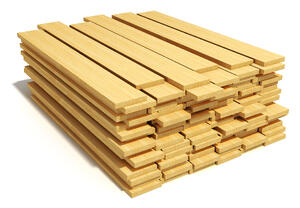For any flooring contractor, few things can be quite as irritating, time-consuming, and costly as the dreaded callback. When flooring is not properly acclimated or concrete subfloors are too wet to build on, numerous problems can occur as a result, many of them ruining beautiful (not to mention expensive) hardwood flooring.
Clients with moisture-related problems resulting from errors in the installation process will naturally want the improperly-installed material removed and re-installed, typically at your expense. This costs you:
-
Time.
-
Money.
-
Other Business Opportunities.
The first two points are fairly obvious, but how does having to reinstall flooring cost you other business opportunities? One way is by making your team unavailable for other jobs, causing delays that may cause clients to cancel their jobs and find another contractor. Another way that callbacks cost you other business opportunities is by giving you a bad reputation, causing potential clients to look elsewhere for installation work.
With this in mind, what is the easiest way to avoid callbacks? How can you ensure that the installation is done right the first time?
One of the most effective ways to avoid callbacks is to use moisture meters to check the moisture conditions of your flooring, including both the sub- and top-floors.
Checking Moisture Conditions for Hardwood Flooring Installation
When installing hardwood flooring, using a moisture meter for wood such as the TechScan Pinless meter allows you to check the moisture content (%MC) of your wood prior to installation. Pinless meters are an especially good tool for checking the %MC of hardwood flooring because they can take measurements in these materials without leaving unsightly pinholes in them.
With a pinless meter, you can simply press the scanning plate onto a sample material, take a reading, and repeat the process until you’ve gotten enough readings from different samples of your hardwood flooring to be satisfied that the %MC is in the correct range for your installation.
Check the Subfloor Too
Beyond simply checking the moisture content of the hardwood flooring that you’re installing, it is important to also check the moisture content of the subfloor that your hardwood flooring is being installed on top of.
Why? Because, even if the %MC of your top floor is perfect, building on top of a wet subfloor will still cause problems as the excess moisture from one material bleeds into the other.
With subfloors, the type of meter you use will change depending on the type of subfloor you have. For wooden subfloors, both pin and pinless moisture meters can be useful. Pinless meters are great for quickly assessing large areas of subfloor, while pin-type meters can help you pinpoint the depth at which a moisture pocket occurs. In fact, many contractors use both types of meters when checking wood materials.
Making Sure Wood is acclimated
 When preparing to install wooden flooring, it is important to ensure that the wood material that you’re using is properly acclimated. Different regions of the US have different ambient humidity levels, which in turn means that wood materials will reach their equilibrium moisture content (EMC) at different %MC by region.
When preparing to install wooden flooring, it is important to ensure that the wood material that you’re using is properly acclimated. Different regions of the US have different ambient humidity levels, which in turn means that wood materials will reach their equilibrium moisture content (EMC) at different %MC by region.
Even in the same region, different buildings might have different humidity conditions as a result of the building’s owners running their HVAC systems at different settings. Because of this, it is important to acclimate wood flooring inside of the building where it is to be installed over the course of several days prior to installation.
To check if your wood flooring has reached its EMC with the building conditions, check the wood’s %MC with a moisture meter each day over the course of several days. When the moisture reading no longer fluctuates from one day to the next, your wood has reached EMC for the environment it’s in and is ready for installation.
While acclimating the wood, it is important to make sure that the HVAC system is in operation, and that it is using the settings that will be used for the building’s everyday operations once finished. This way, you can be sure that the wood won’t be exposed to a significantly different climate once installed that may cause expansion or shrinkage as it absorbs or bleeds moisture to reach equilibrium with its surroundings.
By using a moisture meter to check that wood and subfloor materials are properly acclimated before installation of hardwood flooring, you can help to ensure that you don’t have to go through time-consuming and costly callbacks.
Learn more about using moisture meters for flooring using our free flooring installation guide at the link below, or contact Delmhorst directly for help with your moisture meter product today!

Comments